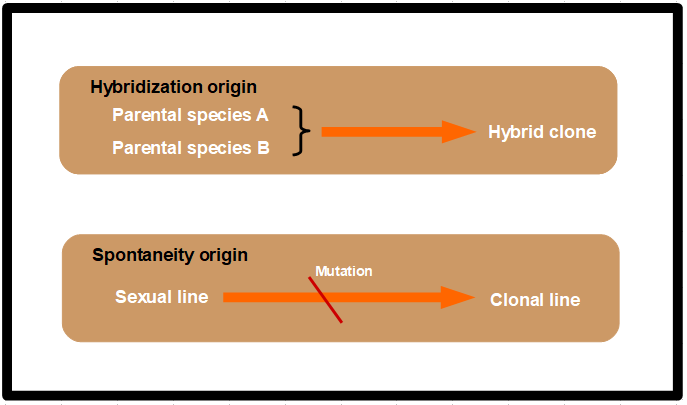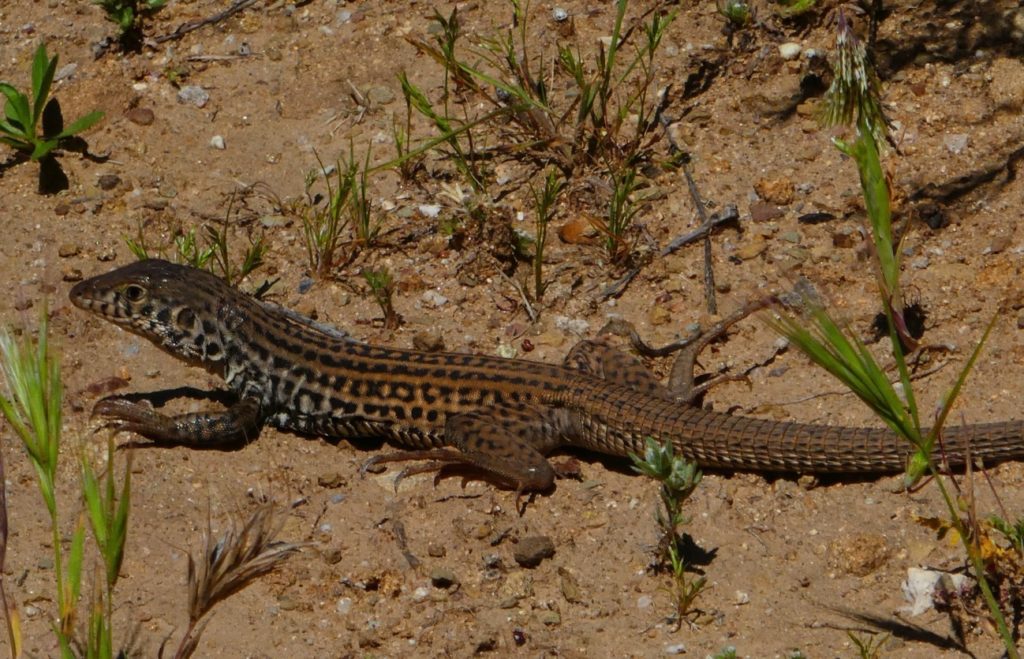
Female emancipacy in the animal kingdom
Sexual reproduction is the process in which new individuals are created by combining genetic material from two organisms of different sexes. It has been quite successful between vertebrates and its presence in most of the taxa is a proof of having big advantages. Genetic combination protects the offspring of carrying harmful mutations that progenitors may have, and it also adds diversity to the species, offering better adaptation if the environment changes. However, life is not a bed of roses and sexual reproduction has also several costs. First of all, the individual only transfers 50% of their genes to the offspring, while in asexual reproduction all the genes are inherited. And second, high quantities of energy are needed to be invested in finding a partner and seducing it. This is why some animals combine sexual and asexual reproduction, using one or another depending on what is more efficient in a specific context.
Some reptiles use this double strategy and females reproduce sexually when conditions are good, but choose asexual reproduction when they don’t find a mate. But, there is a genus belonging to lizard’s group, named Aspidoscelis, that has followed a different evolutionary path from all other vertebrates. Aspidoscelis species lost their capacity to sexually reproduce and their only option is asexual reproduction. To make it brief, we are talking about a species in which males are not essential and they became completely extinct, leaving a world ruled by females. Nevertheless, the ghost of the male still haunts them. All virgin females need a sexual stimulus, that a male would have provided in the past, to ovulate for the first time. In an environment lacking of males, it is another female who takes his role and lies on top of the other female to recreate the copulation.

HOW CAN FEMALES REPRODUCE WITHOUT MALES?
The females of Aspidoscelis species reproduce by parthenogenesis. Parthenogenesis is a type of asexual reproduction that’s not only found in these lizards; other animals, like bees and daphnias, also use this strategy together with sexual reproduction. It consists in the creation of clones, almost identical to its progenitor, from an ovule and in the absence of sperm. This apparently odd phenomenon happens during meiosis division.
Let’s quickly recap meiosis. Meiosis is a cell division that results in the formation of our gametes; the ovule and the spermatozoon. One mother cell splits in two daughter cells, that will also divide in two, creating four different new cells in total, each with half the number of chromosomes of the parent cell. One of these four cells becomes the ovule in females, while the rest of the cells, named polar bodies, will usually disintegrate. In sexual reproduction, this ovule would join together with a sperm cell and they would combine their genetic material forming a complete cell (with all the chromosomes). But in parthenogenesis, the ovule it’s not fertilized by the sperm and, instead, it joins a polar body (one of the resting cells of meiosis). So, they combine the genetic material from the same progenitor.

This is not the only way to reproduce by parthenogenesis. Other animals reproduce by apomictic parthenogenesis, that it goes through mitosis instead of meiosis and uses other mechanisms.
HOW DID PARTHENOGENESIS ORIGINATE?
Parthenogenesis appears several times along evolution, so it hasn’t followed one unique path. This means that not all organisms that procreate via parthenogenesis have evolved from the same ancestor. Specifically in lizards, obligate parthenogenesis originates from two different mechanisms: hybridization and spontaneity.
In one hand, hybridization is the result of the mating between two species, of which the offspring is usually sterile. However, in lizards, the hybrid offspring luckily got a mutation that allowed them to reproduce by parthenogenesis, despite of being sterile. So, instead of dying as a hybrid individual, they were capable of transmitting their genes and create a whole new species, thanks to asexual reproduction.
In the other hand, spontaneous parthenogenesis is the accumulation of some mutations in the sexual genes that prevent sexual reproduction, and alternatively, allow them to reproduce by parthenogenesis. In this case, we are talking about an existing species that, because of one or several mutations, had to change the way they reproduce.

Because Aspidoscelis lizards don’t need any male to reproduce, they are fortunate to colonize almost every environment with only one individual. They don’t require any partner to populate a new region. Asexual reproduction is advantageous, but leaving sexual reproduction behind seems quite risky. Even so, these species have been living on the Earth for way longer than us and it doesn’t look like they are going to go extinct soon. The experts are still trying to understand how they could survive until now, with a theoretically so poor genetic diversity.

Source: dlbowls from https://static.inaturalist.org/photos/68856142/original.jpeg?1587838328
REFERENCE
BBC. 2020. BBC Two – Battle Of The Sexes – In The Animal World – Clips. [online] Available at: <https://www.bbc.co.uk/programmes/p002sjcq/clips> [Accessed 27 April 2020].
Confalonieri, V. (1997). La partenogénesis en el reino animal, 7(39), 20–22.
Manr, N. L. (n.d.). Resumen Boletín Científico de Ciencias Básicas e Ingeniería Pädi, Introducción Boletín Científico de Ciencias Básicas e Ingeniería, 2.